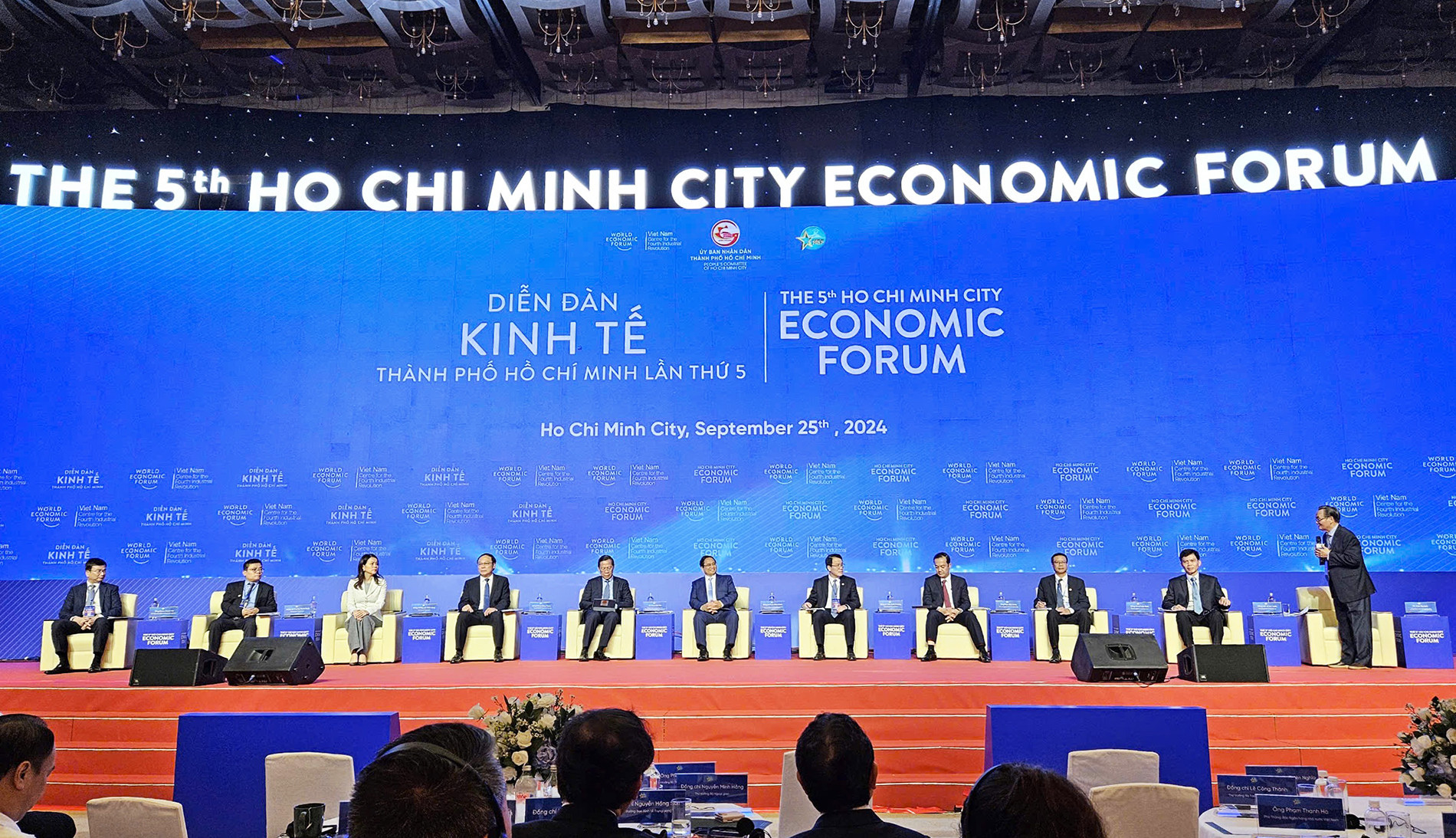
Building an AI government and developing HCMC into an AI (artificial intelligence) City will not only help Vietnam catch up with global technology trends, but also affirm its position in the digital era, said CMC Group president Nguyen Trung Chinh at the fifth HCM City Economic Forum held on September 25.
The CMC ‘AI.X’ initiative, or AI transformation, focuses on combining digital transformation and green transition to promote the development of Vietnam.
AI.X uses AI technology to change the way of operation and interactions in all fields of the society, from the government and businesses to people’s lives.
According to Chinh, the industrial transition process must be based on two major pillars – digital transformation and green transition. He believes the government, businesses and institutions need to be aware of the important role of AI for the process.
AI is becoming a driving force promoting comprehensive changes in all aspects of society and the economy.
Experts estimate that AI will create $15.7 trillion worth of value for the global economy by 2030, and help increase productivity by 40 percent by 2035. In Vietnam, AI is expected to make up $150-200 billion in GDP by 2030.
The figure shows the great potential of AI in fostering economic growth and improving living standards.
Chinh proposed that the government build a long-term AI.X strategy and develop HCM City into a pioneering AI City. He believes that making AI.X an initiative not only for HCM City but also for all Vietnam will help affirm the country's position in the digital age.
Chinh gave detailed solutions to realize the AI.X initiative. Vietnam needs to improve the institutional regime and legal framework by creating regulations to facilitate the development and application of AI throughout the country.
This will help ensure safety and risk management during the AI deployment process, especially in fields which impact society such as healthcare, education, transport and finance.
He said that it is necessary to include AI in the curriculum at different education levels, from general school to university, to equip young people with necessary skills and knowledge. Also, it is necessary to provide in-depth training programs with international organizations to develop a high-quality AI workforce.
Chinh also mentioned the digital infrastructure and AI ecosystem. This requires a firm technological foundation and policy that encourages the participation of leading technology talents in Vietnam and from overseas. During the AI utilization process, people must be put at the center.
Trong Dat